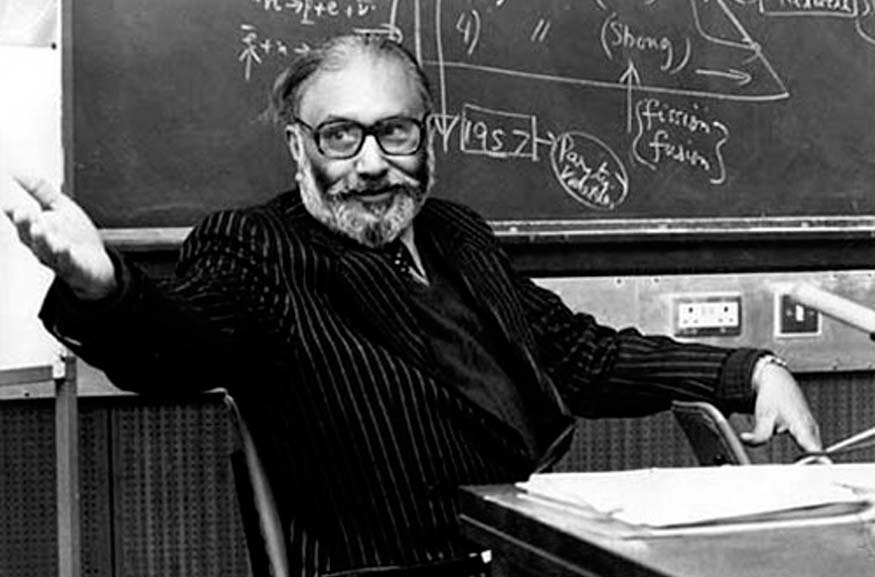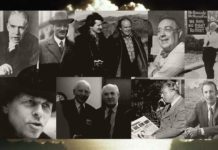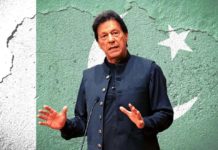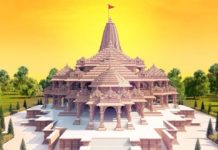Held to mark Professor Abdus Salam’s retirement from Imperial College, last month’s meeting in Italy at the International Centre for Theoretical Physics was a veritable feast for the intellect. In a place of spectacular scenic beauty, the heavyweights of the world of physics – 3 Nobel Prize winners plus a host of others – deliberated on startling new clues about the beginning of the universe and the state of matter at the time of the Big-Bang, to more down-to-earth matters like quarks and superconductivity. This celebration of scientific triumphs was in fact a celebration of Salam’s achievements because, to almost every one of these modern developments, the contributions of this genius from Pakistan have been seminal.
But the man who the stars of the physics world came to pay tribute to was scarcely there. Now almost totally confined to his wheelchair, Salam is the victim of a mysterious neurological disorder which leads to a gradual loss of control over body functions. Twice he was quietly wheeled into a dimly lit back portion of the conference hall through a side entrance to attend the lectures. But his presence was largely symbolic.
Two passions have dominated Salam’s life – an urge to understand the nature of physical reality using the tools of mathematical physics, and the desire to put Pakistan on the high road to prosperity through science.
Seated in a row behind him, and unable to fully concentrate on the lecturer’s words, I silently watched a tragic conflict of man’s spirit versus his body. Here, in front of me, was one of the finest minds of the 20’th century. But now this superb machine was evidently straining hard to understand arguments which at one time would have seemed so obvious to it. Sheer will-power, I thought to myself. A lesser man, locked into a battle for survival, would have not have tried to go beyond himself. I could see so clearly that iron-grit determination which had held Salam steady through his life, driving him to his two greatest achievements – a Nobel Prize in physics and the single-handed creation of the largest centre for physics in the world.
Two passions have dominated Salam’s life – an urge to understand the nature of physical reality using the tools of mathematical physics, and the desire to put Pakistan on the high road to prosperity through science.
Salam’s first passion brought him fame and recognition. In 1949, this young prodigy from Jhang earned a first-class degree in physics from Cambridge University in just a year. Then in 1950, he solved an important problem in renormalization theory and instantly became a minor celebrity. In 1951 he returned to Government College Lahore, but found to his disappointment that research was not encouraged, even frowned upon. Without a library or colleagues to talk to, he reluctantly went back to Britain in 1954.
By the early 1960’s, Salam was already one of the world’s top physicists. But Salam was a political animal as well. He skillfully used his growing reputation to push his European and American colleagues into supporting his dream of a major centre for physicists from the developing world. With his unhappy period at Government College Lahore at the back of his mind, Salam wanted a place where Third World physicists could practice the advanced science of the West without being forced to become a part of the brain drain, as indeed he had been.
In 1964, supported by the International Atomic Energy Agency, Salam succeeded in setting up the International Centre For Theoretical Physics in Trieste, Italy. Why Italy and not Pakistan? The reason was simple: Pakistan showed no interest, but Italy wanted the Centre and was willing to put down a lot of money for it. Today the ICTP is a sprawling complex of buildings regularly visited by scientists engaged in research from over 50 developing countries. There have been over a thousand visits by Pakistani scientists.
With prizes, awards, seminars and meetings, the world of physics has paid its due to Salam. But what about his country?
Combining administration with research is never simple. But over a period of four decades, Salam won about 20 international awards which, apart from the 1979 Nobel prize, includes the Hopkins Prize of Cambridge University for the most outstanding contribution to physics in 1957-1958, the Hughes Medal of the Royal Society, the Oppenheimer Memorial Prize, the Adam’s Prize, and many others. But more than a winner of prestigious prizes, posterity will record Salam, together with Steven Weinberg, as one of the unifiers of the apparently different fundamental forces which govern the universe.
In recent years, Salam’s unified electroweak theory has been elevated to the status of a touchstone. Now generally called the “Standard Model” of particle physics, it has been tested in dozens of clever experiments and has passed with flying colours in each. An eighty mile long Superconducting Super Collider (SSC), under construction in Texas at a cost of some 15 billion dollars, is motivated in considerable part to search for the “Higgs” particle predicted by the Standard Model.
With prizes, awards, seminars and meetings, the world of physics has paid its due to Salam. But what about his country?
Under Ayub Khan, Salam wielded considerable influence. As the chief scientific adviser to the president, he was instrumental in launching a massive training programme for scientists, in setting up PINSTECH as a high-quality research institution, and in creating the space agency SUPARCO. His influence continued, albeit to a lesser extent, in the Yahya and early Bhutto years.
1974 marked the turning point. By a decision of the National Assembly, the Ahmedis were excommunicated from Islam. Salam, a believing Ahmedi, resigned from his official position as chief scientific adviser. On Bhutto’s request, he agreed to help informally. But henceforth his involvement with the Bhutto government was more symbolic than substantial.
Somewhat paradoxically, Salam enjoyed better relations with General Zia who would receive him as a state guest and who awarded him the Nishan-i-Imtiaz in 1979. However, Salam was carefully excluded from exercising any real influence over scientific matters. Benazir Bhutto, on the other hand, during her term as prime minister, felt no need to accede to Salam’s request for an audience with her. And Nawaz Sharif, at a recent Government College Lahore function, topped it all by reading from a list of college alumni who had achieved distinction without even mentioning the most distinguished one of them all.
Why did the leaders of government in Pakistan choose to shunt out the one Pakistani scientist who put the country on the scientific map of the world? The answer seems to be obvious: an orchestrated effort on part of the religious elements in the country, with the Jamaat-e-Islami at the forefront, has targetted Salam for his association with the Ahmedi faith.
For example, I can recall that in 1979, when Salam visited Islamabad at General Zia’s invitation, the Physics Department at Quaid-e-Azam University sought to invite Salam to give a lecture on his Nobel Prize winning theory. But, in view of threats of violence from the Islami Jamiat-e-Talaba, this invitation was never conveyed to him by the university authorities. As another example, one issue of the weekly “Takbeer” carried a cover story accusing Salam of selling out Pakistan’s nuclear secrets. Laced with crude insults and abuse, this hideously grotesque concoction is as credible as perhaps the script of “International Gorrilay”.
Fearful of being attacked, people by and large have chosen to remain silent even if they admire Salam. Consequently, unlike India which has science institutions named after men like Saha, Raman, Bose and Bhabha, Pakistan does not have any institution named after its only truly great scientist. Nor is this person’s name made known to children through their textbooks, or through television and radio, even though the names of far lesser persons are. Had Salam been an Indian, there is little doubt that he would have been in the ranks of his equals.
And so it puzzles me why, in spite of all this, Salam remains committed to Pakistan. Could it be just plain stubbornness? Or could it be that certain beliefs acquired in one’s early years remain no matter what? Whatever the deep psychological reasons be, this commitment is clearly visible. For example, at his Centre, sometimes to the resentment of other visitors, Pakistanis get preferential treatment and have easier access to the director. While feeling that this is wrong in principle, I feel that this is one indication of his attachment.
More importantly, for over a decade Salam has quietly been supporting needy science students throughout Pakistan with his Nobel Prize money. The same money has been also used to purchase scientific equipment for half a dozen Pakistani colleges, and to support an annually awarded prize for scientific research.
Life’s long journey, and debilitating illness, have made Salam more sensitive than ever to estrangement from his country. I bear unfortunate witness to that.
On the third day of the Trieste conference Salam was presented an honorary doctoral degree by the University of Petersburg. The conference hall was full. Flanked to his left by Nobel Prize winners C.N. Yang and J. Schrieffer, and to his right by the rector of the University, Salam listened from his wheelchair but made no attempt to speak. With the formal end of the proceedings, a multitude of people from the international scientific community thronged forward and stood patiently in line to offer congratulations.
As I watched, it was the turn of a young Pakistani visitor to the ICTP. “Sir, I am a student from Pakistan. We are very proud of you…” The rest I was unable to hear clearly because of the noise in the hall. Salam’s shoulders shook and tears silently coursed down his face.
A feeling of deep sadness overcame me. Nature has chosen to be cruel to Salam. But nature is to be forgiven because it is blind, both in its gifts and punishments. Much less easy to forgive is the treatment that we in Pakistan have given to our best.
Written by Pervez Hoodbhoy. Published in 1990s.









